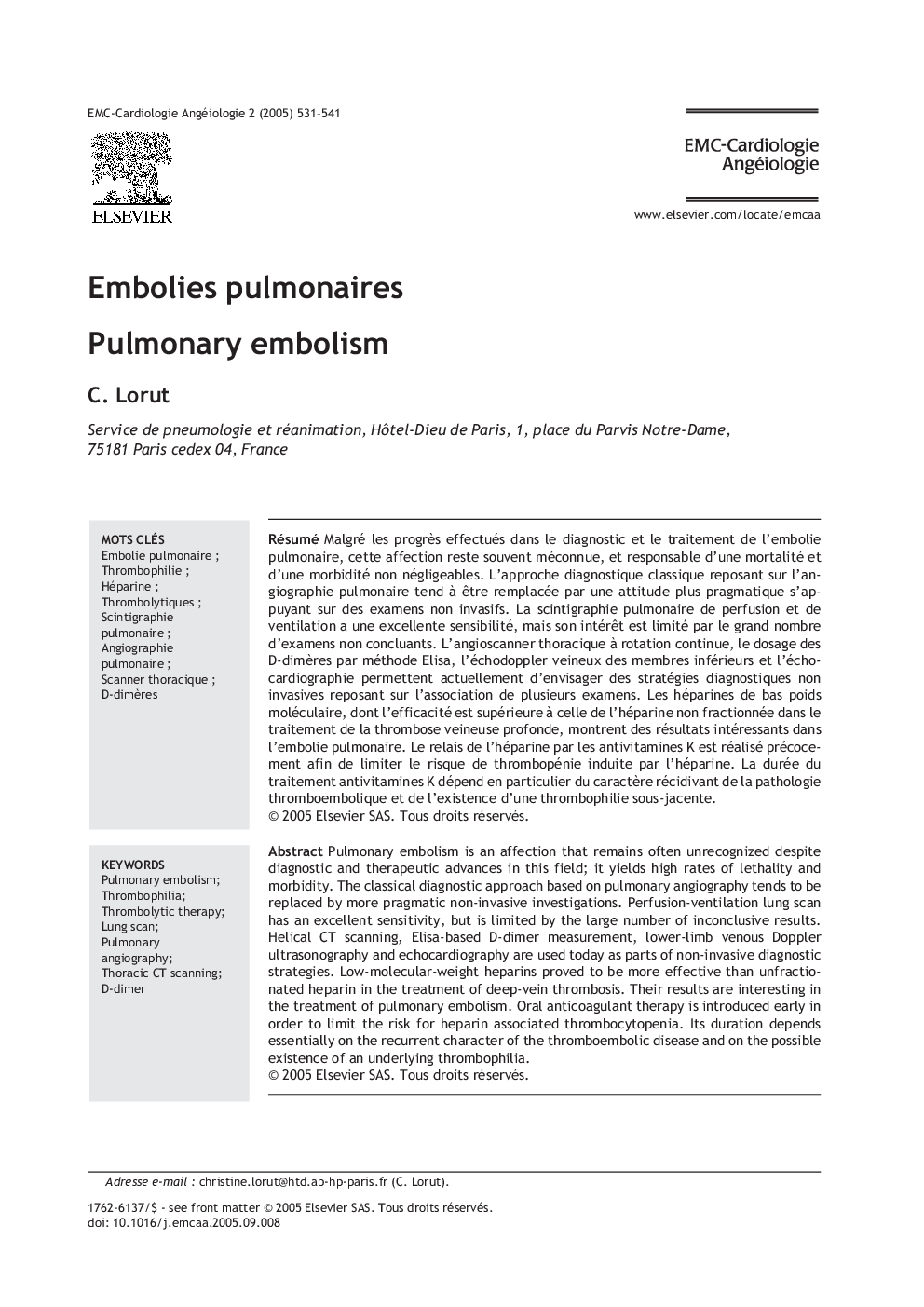| Article ID | Journal | Published Year | Pages | File Type |
|---|---|---|---|---|
| 9167412 | EMC - Cardiologie-Angéiologie | 2005 | 11 Pages |
Abstract
Pulmonary embolism is an affection that remains often unrecognized despite diagnostic and therapeutic advances in this field; it yields high rates of lethality and morbidity. The classical diagnostic approach based on pulmonary angiography tends to be replaced by more pragmatic non-invasive investigations. Perfusion-ventilation lung scan has an excellent sensitivity, but is limited by the large number of inconclusive results. Helical CT scanning, Elisa-based D-dimer measurement, lower-limb venous Doppler ultrasonography and echocardiography are used today as parts of non-invasive diagnostic strategies. Low-molecular-weight heparins proved to be more effective than unfractionated heparin in the treatment of deep-vein thrombosis. Their results are interesting in the treatment of pulmonary embolism. Oral anticoagulant therapy is introduced early in order to limit the risk for heparin associated thrombocytopenia. Its duration depends essentially on the recurrent character of the thromboembolic disease and on the possible existence of an underlying thrombophilia.
Keywords
Related Topics
Health Sciences
Medicine and Dentistry
Cardiology and Cardiovascular Medicine
Authors
C. Lorut,
